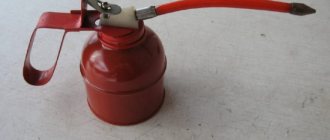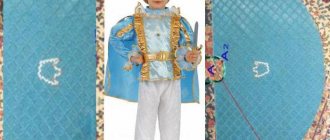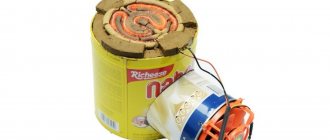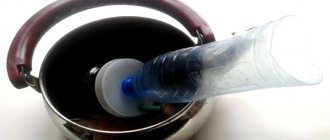If you want to ride a bicycle safely in winter (and not only), then you need to take care of good wheel grip on snow, mud, sand, and ice. You can buy studded tires, or you can make studded tires for your bicycle with your own hands.
In this article, let's look at a more accessible and cheaper option on how to do this.
Service
Due to the fact that a wheel with studded bicycle tires has a small contact area with the road surface, high pressure in the wheel can negatively affect the condition of the tires. Due to the high pressure, the spikes fall into the snow or ice. With reduced pressure, the total weight is distributed over a larger surface. At the same time, the contact area and controllability of two-wheeled vehicles increases.
Too low tire pressure is also undesirable. In this case, the side cord is subject to increased friction, and the tire quickly fails.
Choice
The screws were selected and, as a result of a short search, were found at Epicenter at a price of 60 UAH. for 1000 pieces. 500 was enough for me and the purchased screws were divided between two.
Now we choose tires. The main factor in the studding project was the minimum amount of cash investment, so that in case of failure, you would not regret the lost funds.
After asking around among members of the forum for unnecessary tires and places where you can buy inexpensive new ones, I came across a very attractive option: a pair of not too damaged (and the front one is almost new) Tioga Factory DH tires. The owner gladly and in the name of new research parted with them for a symbolic price of 40 UAH/piece. What's interesting about the tires: 2.3″ tread width, large thick lugs, ideally positioned for studs and likely effective in snow.
Do-it-yourself winter tires for a bicycle - an alternative to branded tires
In order to be able to enjoy cycling in winter, it is important to have high-quality tires with studs. Do-it-yourself winter tires for a bicycle will help out in this situation. It will cost the owner much less than a purchased one, and in terms of clutch quality it can even surpass the factory options.
Do-it-yourself winter tires for a bicycle will cost much less than purchased ones
There are three main ways to make your own winter tires for your bike:
Choosing the best
Only the lazy manufacturer of rubber for transport is not currently producing bicycle tires. Therefore, the choice is huge, but there are not so many really worthwhile options. We have identified leaders from each category that will make the ride reliable, comfortable and safe, and the rubber itself differs from its competitors in durability and high quality.
Universal models
In the category of universal rubber, we can highlight the Schwalbe Ice Spiker model. Simplicity and reliability make this tire the best option for simple, rare and short winter rides. If you follow the rules of storage and use, you can achieve good service for several seasons. This model is presented in several more advanced and improved variations, which can be recognized by the Pro index. Such rubber is lightweight, soft and, accordingly, more expensive.
Nokian Extreme 294 tires have similar characteristics. It is also practical, reliable, and even popular, but is still slightly inferior to the first option.
If you are looking for lightweight tires, you can pay attention to the Nokian WXC300, if its high price does not deter you
A novice cyclist who, for the sake of experiment, decided to extend his season into the winter, can take a closer look at the Kenda Klondike XT. This rubber is available to everyone, due to which you can turn a blind eye to the considerable weight and not the best roll.
Urban models
In this group, we have combined those items that are capable of withstanding travel on bare asphalt and will allow you to maintain stability on snow/ice surfaces. To meet such requirements, the rubber must have very strong studs that will have a high reliability rating. The tread is smooth, so it is strictly not recommended to use it off-road.
The Schwalbe Marathon Winter tires have these characteristics; Nokian pleasantly surprised us with its creation called W240. It is not for nothing that this model is the leader in Finland.
For winter riding, you can also use non-studded treads, but these should only be Continental TopContact Winter II. For snow, such tires may not be the best option, but driving on them in icy conditions is a pleasure. The tread has a design that allows it to literally stick to the ice.
We tried to tell you as much as possible about winter tires for bicycles, reveal all the secrets of choice, reveal the essence of the characteristics and even conduct a comparative analysis of some popular models. Now it will be easier for you to make a choice, not make a mistake and ride on the purchased tires for several seasons.
Method of installing self-tapping screws on the tread
So, we are preparing for winter, with our own hands. First, inspect the tread pattern. You need to decide which protrusions you will need to screw the screws into so that their location is symmetrical. This is very important, because if you place more spikes in some places and fewer in others, the grip will be uneven, which will significantly worsen movement.
After it has been decided which protrusions need to be equipped with spikes, they are marked so as not to make a mistake in the sequence, after which they are drilled. It is convenient to do this with an electric drill, and it is better to choose a drill twice as thin as self-tapping screws.
Well, now about the skating itself
Even when riding on open ice, the bike rolls as if it were on asphalt. There are no skids, even when cornering. You can easily drive up the hill, where the children made themselves a skating rink, filling it with water, the traction occurs as in the summer. It also goes great in the snow. As for asphalt and slippery stones, everything here depends on how the studs are positioned. Many, knowing that they will ride mainly around the city in winter, do not install screws on the middle row at all. But if there is such a need, then they should not stick out from the rubber by more than 2 millimeters. In general, do-it-yourself studding of winter tires is justified, and its advantages outweigh the disadvantages.
Manufacturers of winter bicycle tires
In fact, it’s not at all difficult to choose winter tires for your iron horse. Tires can be selected based on the purpose of use and the quality of the rubber coating.
- For city streets treated with reagents, salt or sand - cross-country semi-slick tires;
- Winter tires with two rows of studs;
- Winter tires with four rows of studs;
- Mud winter tires for light snow.
Like car wheels and bicycle wheels, there are studded winter tires. This is a good choice for driving on snow or ice. The studs on such rubber are metal, they provide tight grip on slippery surfaces. It is very difficult to find studded semi-slick tires for the city.
Double-row and multi-row
Studded tires are divided into two types: double-row and multi-row. The number of rows of studs on a tire determines the style of cycling.
On two-row roads you need to drive through ice at a lower speed. Especially if the rows of spikes on them are spaced far apart. These tires are designed for fast driving on the road surface in winter. Their side studs work best when cornering. And before leaving on the ice, you need to dismount and reduce the pressure in the chambers so that the spikes installed far from each other can bite into the ice layer.
Double-row tires with studs set close to the center line are universal for driving on asphalt roads and ice. But you can’t move on the road as quickly as on a two-row with widely spaced spikes. There are reviews that say that during sharp braking, apparently on asphalt, the pins break out of them along with the cups.
Double-row tires are cheaper than multi-row tires and are a little lighter, because they have less iron installed.
Of course, you need to ride on ice on these bike tires more carefully than on multi-row studs. Without making sharp turns and without sudden braking
Four-row winter tire Schwalbe Ice Spiker HS 333. Produced in one size - 26x2.10 inches. It has 304 spikes and weighs 1 kg. Price – 118 dollars
Double-row tire Schwalbe Snow Stud HS 264 with widely spaced studs. Available in one size – 26×1.90 inches. It has 102 spikes and weighs 980 grams. Price – $78
Two-row Suomityres (Nokian) Stud A10 with widely spaced spikes. Available in four sizes: 26×1 1/2×2 – 62 studs, 26×1.5 – 100 studs, 28×1.5 – 76 studs, 28×1 5/8×1.5 – 74 studs
Tire for city and touring bicycles Suomityres Hakkapeliitta W106 with narrow studs. Produced in diameters of 26 and 28 inches, sizes 26×1.9, 28×700×45С, 700×35С. There are 106 spikes installed on it, as indicated by the markings. Relatively inexpensive - $50
Schwalbe Winter double-row city tire with narrowly spaced studs. Available in four sizes: 26x1.75, 700x30C, 700x35C, 700x40C. Depending on the size, it has from 100 to 120 spines. Weighs about 1 kg. Price – $59
DIY studded tires
There are many pros and cons to making your own studded tires. To create a complete picture, let's consider both options.
Advantages:
- Price. Even a not very old tire will be 2-3 times cheaper than a new branded one;
- Availability. In hardware stores you can buy everything you need;
- Speed. We will need 3-4 hours to install the spikes;
- Choice. The person himself decides what material and size of spikes to choose and install.
Disadvantages of studded bicycle tires:
- It is not possible to install the carbide tip manually;
- Quality not tested;
- Waste of time and effort;
- No experience or knowledge in assembly;
If these arguments do not convince you, then go to the hardware store, buy everything you need and get to work.
You will need:
- First you need to buy one tire. The tread block must be at least 5x5 millimeters;
- Stainless steel fixing screw with a semicircular head for a cross (M2x13 millimeters). The quantity should be proportional to the number of spikes;
- Stainless steel nuts M2.
As for the tools, we will need:
- Nippers or pliers;
- Drill;
- Drill 1.5 millimeters;
- 4 mm socket wrench.
If you have all the tools and parts, you can begin installation.
Stages of tire studding:
- There is no need to stud each tread block. You need to choose for yourself the pattern according to which the spikes will be installed. The number of studs throughout the wheel should be correctly calculated. The front wheel is responsible for movement and maneuverability, so it is better to install spikes on the side blocks. The rear wheel is responsible for traction with the road, so it is better to install spikes on it in the center;
- We make a small hole in the tire in the center of the block;
- We insert a screw into the recess. It is necessary that the screw is not loose, but pressed in with force, but there is no need to overdo it;
- Next, we attach the structure to the rim and rock the wheels slightly;
- Next, we attach the wheels to the bike and turn it over;
- Tighten the nuts;
- The tightening areas can be treated with glue to prevent the nuts from unscrewing;
- Use pliers to remove excess thorns;
- Let's start running in, as mentioned above;
- Let's enjoy our creation.
After the work done, winter driving will become much more comfortable and safer.
How to find out your tire size?
All manufacturers indicate the required parameters on the side. Branded rubber may contain additional information, such as model, permissible pressure and the presence of protective layers.
Over time, this layer may wear off or disappear altogether. In this case, you should know that manufacturers adhere to the standard ETRTO labeling.
Example: The tire says 37-622 (28 x 1 5/8 x 1 3/8 - 700 x 35C), where:
- 37-622 are the dimensions in millimeters responsible for the tire. These numbers play a major role when choosing a tire.
- 28″ 1 5/8″ x 1 3/8″ – indicated in inches and is responsible for the outer diameter and width of the tire.
- 700 X 35C - these numbers correspond to the French notation system. 700 - outer diameter. The letters determine the width. The narrowest is designated by the letter A, and the widest by D.
Do I need to buy the same tires for the rear and front?
It is allowed to use the same tires if the bike is used for normal city riding. This allows you to get double speed and coasting.
For athletes, this technique is unacceptable, since the ability to control braking and acceleration is lost.
Steps
Method 1
Rubber with large tread
- 1
Buy everything you need. - 2
Using a very thin drill, drill out the studs on the tire that you are going to stud. - 3
Screw in the self-tapping screw from the inside.Make a hole and immediately screw in the screw. If you drill holes first and then screw in self-tapping screws, the holes will be very difficult to find.
If the hole is not perpendicular to the tire, the screw will stick out to the side.
- 4
Cover the inner surface of the tire with reinforced tape; in some cases it is better to use two layers of tape.In bike shops you can find “liners” from companies such as Slime or Mr. Tuffy, these can be used instead of tape to protect your camera.
- 5
Place the tire on the rim.Installing a tire will be like wrestling a porcupine, so watch your hands.
Method 2
Fine tread rubber
- 1
Remove the wheels from the bike and then the rubber from the rims. - 2
Find a place where you can tighten the bolts.Choose a place between the rubber spikes, try to choose places closer to the center and a little on the edges.
- 3
Mark with a marker where you want to place the tenons and drill holes there.Drill smaller holes; screwing the bolts into them may take some time, but they will not fall in.
- 4
Screw the bolts with the threads facing outwards, then screw the nuts onto them from the outside.The nuts will act as spikes.
- 5
Cover the inside of the tire with two layers of tape. - 6
Pull the tires onto the rims and place the wheels back on the bike.
Method 3
Chains and clamps
- 1
This method is much simpler, but is only suitable for bicycles without rim brakes. - 2
Buy everything you need. - 3
Remove the wheels from the bike and measure the circumference of the rim and tire. - 4
Cut pieces of chain to the required length. - 5
Secure the pieces of chain wrapped around the rim and tire with metal clips or wire.You can also tighten the chain with bolts and nuts.
- 6
Put the wheels back on the bike.This shouldn't be a problem, but if the wheels won't work, remove the fenders.
Instructions for creating studded tires
Next, we provide detailed instructions on how to make a studded one. Of course, first of all, the tire must be disassembled. After that, examine it and select the places where the spikes will be located. As mentioned above, it is better to choose places where the rubber is thicker, because the screws will hold it more firmly and there will be no tears. You can also make spikes on the side of the tire so that they point toward the ground at an angle. With them it will be more convenient for you to ride your bike, since the side studs will make it easier to take turns on icy roads.
It is best to make four rows of studs: two rows at the bottom of the tire and two rows on the sides.
Now let's get down to the process. Take a drill or awl and make a through hole in the tread where the first spike will be located. There is a little trick here that will greatly simplify the work.
Important! Pierce from the outside, not the inside. This way you will see exactly where the spike will come out and will not hit a thin section of rubber.
Then squeeze a drop of superglue onto the hole from the inside of the tire. Take a self-tapping screw and use a screwdriver to screw it into the hole until it stops. There is no need to overtighten so as not to create additional stress on the rubber. At the same time, the head of the screw must fit tightly enough to the tire for the superglue to fix it in place.
Important! Insert each screw immediately after the puncture. If you do all the punctures first and then start inserting screws, you will have a very difficult time finding the holes, especially if your tire is black on the inside
Now you have a rather monotonous job of adding all the spikes. But it won't take too long. And when your tire turns out to be studded around the entire circumference, acquiring a rather futuristic look, you can rejoice at the results of your work: your own studded tires for a bicycle are ready!
There is only one final, but important detail left: you need to make a gasket so that the heads of the screws do not rub the inner tube of your bicycle. The easiest way to make such a gasket is from an old camera. But you can get creative and use scraps of leather or other material. If you don't have anything like this on hand, just cut the old inner tube lengthwise and wrap it around your bike's inner tube. You can lubricate it from the inside with superglue for better fixation. Put your new studded tires on top and go ahead and try them out!
Be prepared for the fact that at first a variety of debris, dry leaves and other objects that have fallen under will cling to the spikes. But over time, the screws will become a little dull and this problem will disappear. Good luck on the roads!
It is important to choose high-quality studs from a well-known brand. The shape can be oval, tetrahedral, or with several flanges. The most famous brands on the market today are Nokian and Gislaved.
Most often, single-flange oval studs are chosen for hand studding, as they are easier to install. If the car is operated in difficult weather conditions on a poor-quality surface, then it is better to choose double-flange products. How to make using a handy tool You can make your own spike in three ways:
- Manual.
- Semi-automatic.
- Automatic.
The first method is the most labor-intensive; it uses a special wrench, a screwdriver and a hammer, and you perform each action with your own hands. The advantage is that no special tool is required, but a lot of effort is required for such work.
Preparing your bike for winter
Putting winter tires on a bicycle does not mean that it is ready for use. There are a number of other important points .
- In conditions of low temperatures, snow, and ice, the effectiveness of rim brakes sharply decreases - the pads simply slip along the icy rim. A winter bicycle must be equipped with disc brakes .
- If your bike is equipped with elastomer-type shock absorbers, you need to be prepared for the fact that their effectiveness during the winter period will be minimal. The rubber or caoutchouc filler will “stiffen” in the cold, and the hardtail will turn into an ordinary rigid one. Air or hydraulic shock absorbers should retain their qualities, but they must be covered with good boots.
- In winter, visibility on the roads deteriorates significantly . This is due to the short daylight hours, snowfalls, and the fact that car windows are often frozen, fogged up or splashed with dirt. For your safety, you should consider installing additional lights and flashing lights on your bike, both in front and behind. It would be nice if the cyclist himself is dressed in bright clothes with a reflective effect, or if he sews reflective elements on them.
- No matter how you prepare your bike for winter, the likelihood of a fall during this season is much higher. This suggests that an important item of winter equipment for a cyclist should be protective equipment - a helmet, gloves, protection for the joints of the hands and feet .
Want to learn bike tricks? Start with “wheelie” - the ability to ride on a wheelie and amaze your friends.
Don't miss the story about gyroplanes. Do you know what this is?
"Hand made"
A good winter bicycle tire is not cheap, so craftsmen practice studding summer “evil” tires with their own hands:
- In this case, most often, self-tapping screws with a diameter of 4.2 mm with a press washer, 13 mm long, .
- After carefully marking the tops of the hooks, the self-tapping screws are screwed in from the inside with high-quality glue (for example, “88”).
- After this, an old tube is glued inside the tire as a gasket, the wheel is assembled, inflated to maximum pressure and kept in this state for one or two days.
- The sharp ends of the screws that are too protruding can be ground down so that there is 2-3 mm above the surface of the rubber hook.
That's it, you can master winter trails!
To be fair, it must be said that this method of turning tires into winter ones, although it has many fans, is still subject to sharp criticism from professionals.
No matter how hard you try, it is still impossible to maintain at home the correct rubber stud geometry that the best manufacturers include in their products.
To finish the topic with wheels, a few more important points.
In winter conditions, it is necessary to carefully monitor the tire pressure - it should be lower than in summer - overinflated tires will not provide the required grip. However, you cannot reduce it too much - this will lead to rapid wear of the tire.
to the direction of rotation when installing the wheel . The tread pattern and stud placement are “tailored” specifically for it. A mistake that is sometimes forgivable in summer can lead to unpredictable behavior of the bike on slippery roads in winter.
Sliding: how to ride
I rode in the scenarios described above all last winter. I drove almost every day, along the side of the road in Moscow or forest paths, but without fanaticism - up to 15-20 kilometers. Problems began only in the two most extreme conditions of our winter - black ice and snowstorms. Both have gradations. On a thick tire with a deep tread, you can drive quite confidently on light ice without fear of spinning up; In shallow snow it’s a blast. Through deep ruts of dirty snow on the roads created by cars - almost without problems.
But at some point, so much snow falls that the bike stands in it like a spoon in thick borscht, and does not go anywhere for natural reasons. The bike rides great on ice, the main thing at this moment is not to breathe - and not to shit yourself. Two of my two falls were on ice - both times I found myself on it quite unexpectedly and did not have time to realize that now it was not worth turning, braking or doing anything at all. On studded tires this rule is not so strict, but even with them you should not turn sharply and brake on ice.
Otherwise it was complete tsarism. Promenades through the forest at night after ten hours of sitting in front of the monitor have become a tradition - it’s especially cool that in winter, due to the snow, visibility in the forest allows you to drive almost anytime and anywhere without flashlights. You can drive around the city not only to go shopping, but also to a meeting (if the dress code is not important). On the afternoon of December 31, I traveled on business to almost a dozen places from North-East Administrative Okrug to the center of Moscow - I wish you good luck repeating such a trick by car or public transport without dying of old age or grief.
But the most important thing is that I stopped being a stranger in the cold. All my life, winter seemed to me to be the worst time of year to live. To dispel the dark spell, it was enough to find a suitable winter activity: in the same way, one falls in love with winter through snowboarding or skiing. From vigorous pedaling, the body warmed up and radiated warmth. The cold wind pleasantly stung my face and burned my lungs, but not much. All this slushy, salty crap underfoot, in which unfortunate pedestrians had been swarming all winter, was now flying under the wheels of my bike.
Suspension fork
Whatever the design of the suspension fork, its characteristics will still change when exposed to sub-zero temperatures. The degree of its swelling depends on the low level of the fork. It is not possible to correct this situation, so all that remains is to humbly accept this fact.
The spring-elastomer fork will become stiffer, and the spring-oil fork will work more slowly due to thickening of the oil. If such a situation arises, it is worth refusing to use a lockout so as not to cause damage to the damper. The situation can be alleviated by using thinner oil and adjusting the rebound of the fork in accordance with the temperature at which it is operated.
If an air fork is used, you will need to increase the air pressure level until the sag returns to normal. This procedure must be performed outdoors.
The pants on the fork must be protected from aggressive influences to prevent the formation of corrosion. Modern forks are often made on the basis of magnesium, which, as we already know, actively enters into chemical reactions with other elements. For winter riding, you can choose an inexpensive fork with high rigidity, which are mostly used in trials bikes.
Repair spikes. revive winter tires with your own hands
The problem of road safety becomes most urgent in winter. To solve this problem, special tires with studs are used, which ensure safe and comfortable movement. But sometimes rubber quickly fails, losing a large number of studs. In this case, it is best to purchase new tires, but if this is not possible, re-studding the tires will help. Reviews about this method of updating tires are varied. Some drivers consider it a completely convenient and economical solution, while others are confident that its use is irrational.










